
A complete skateboard is built from multiple materials and components. Understanding the characteristics of each part is essential for learning tricks efficiently and selecting equipment that supports your progression.
Summary
There are three major components
The deck, the trucks, and the wheels form the core structure of a skateboard. These parts are connected with bolts and nuts. Smaller elements, such as bushings and bearings, can also have a significant impact on the overall feel of the board.
It ultimately depends on your preference
Skaters often mention that narrower decks and lighter trucks make flip tricks easier, while wider decks provide stability for transitions and bigger obstacles. However, the most important point is to find the setup that suits your personal style and body mechanics. For instance, some skaters—including myself—prefer softer yet responsive bushings, as they can make tricks like Treflips more manageable. Click here for more details.
Regular maintenance is essential
Although skateboard components are designed to be highly durable, they do not last indefinitely. When your board begins to behave unpredictably or feels noticeably different, it may be time to replace individual parts.
Simulation
The Deck
Summary
The deck is the platform on which the skater stands, and it serves as the foundation to which all other components are attached. Decks come in various sizes and shapes, though most of them feature kicks on both the tail and the nose, as well as concave—curved surfaces along the sides that enhance control.

Size
Most skateboard decks are asymmetrical, with the nose (front) being slightly larger than the tail (rear). While deck lengths tend to be similar—generally around 30 inches—the width varies more substantially, typically between 7.5 and 10 inches, and this width has a significant influence on how the board feels. A narrow deck usually feels more responsive and rotates more easily during flips, though it offers less stability.
In contrast, a wider deck provides greater stability but can be harder to flip due to increased weight and inertia. However, this does not necessarily mean that narrower decks are superior for flip tricks. Many “technical” skaters actually prefer moderately wide boards (around 8 to 9 inches). Ultimately, the ideal width depends on your personal preference, so it is advisable to try various sizes to discover what suits you best.
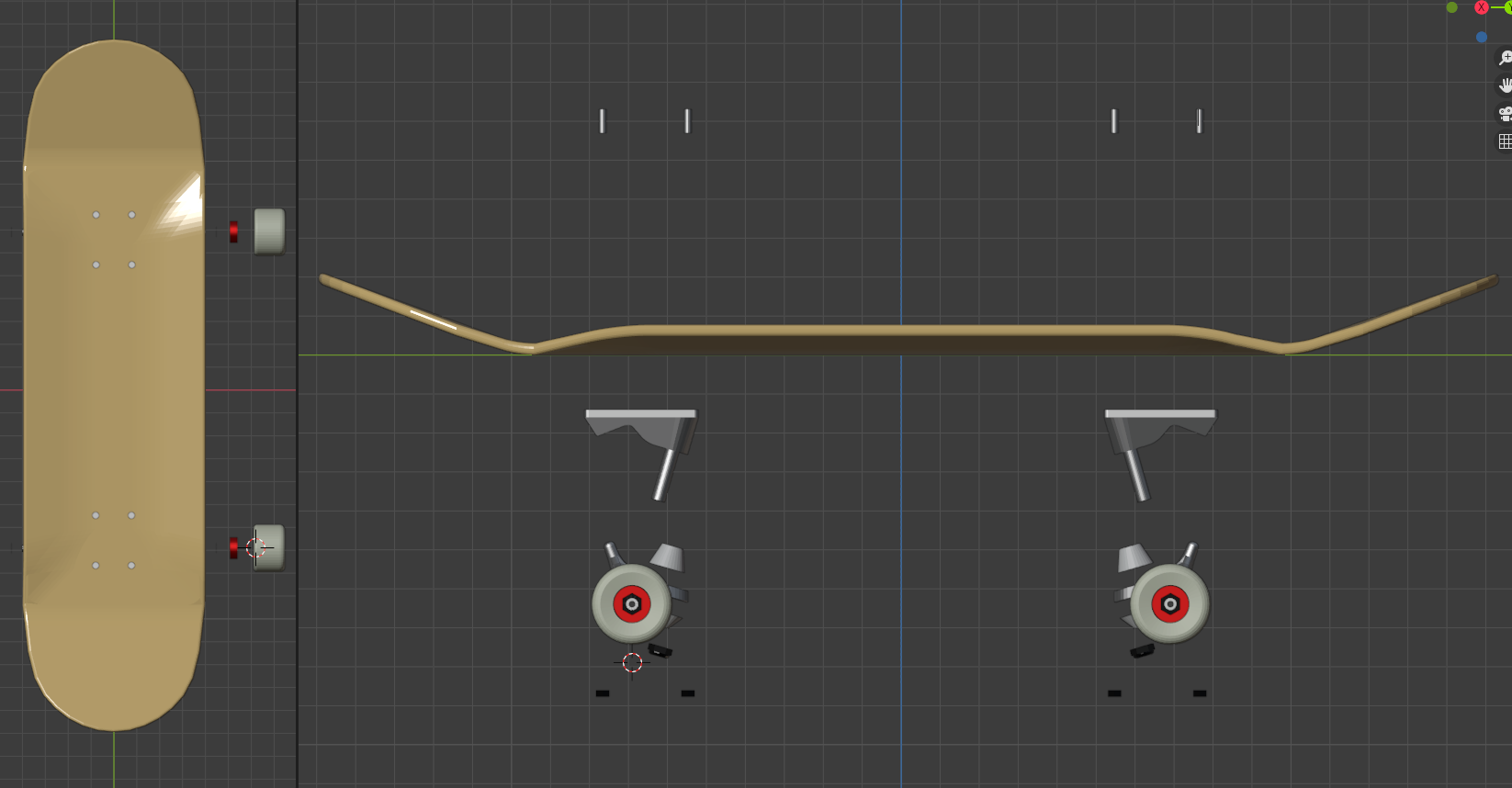
Material
Most standard decks are constructed from seven to eight layers of maple veneer, laminated with adhesive and pressed into the shape described above. Some decks incorporate carbon fiber disks or plates within the layers to enhance durability and responsiveness.

Which one should you buy?
There are countless skateboard decks available on the market. When you are just starting out, the subtle differences between them are unlikely to affect your skating significantly. Choosing a deck based on its appearance, the artist who designed the graphics, the skater it represents, or the brand you prefer is perfectly reasonable for beginners.

The Grip Tape
A sheet of grip tape—similar to coarse sandpaper—is applied to the top surface of the deck to ensure that the skater’s feet do not slip. Grip tape is available in various brands and levels of roughness. Some skaters prefer a more abrasive surface for increased grip, while others choose smoother textures for enhanced controllability during technical foot movements.

The Trucks
Summary
Trucks are the most mechanically complex and influential components of a skateboard, significantly shaping how the entire setup feels. Many skaters claim they can adapt to different decks but not to unfamiliar trucks. The trucks connect the deck and wheels, support the rider’s weight, determine steering characteristics, and play a major role in overall ride quality.

Material
Most skateboard trucks are made from steel or other strong metal alloys and are highly durable. They generally last for many months without requiring replacement or repair. A truck is composed of several parts: the axle, the kingpin, the hanger, the bushings, and the baseplate. Some models even feature a plastic or composite slide plate attached to the baseplate to reduce friction during grinds.

Hangers
The hanger and axle determine the overall width of the truck. If the truck is too narrow, the board becomes unstable; if too wide, rotating or flipping the board becomes more difficult. Ideally, the truck’s width should match the width of the deck or be slightly narrower. Some skaters prefer trucks that extend slightly beyond the deck’s edges.
As always, personal preference plays a major role. The hanger material also influences grind performance. Some brands use harder metals or titanium to enable lighter, longer, and smoother grinds, though such materials may be slightly less durable and are usually more expensive.
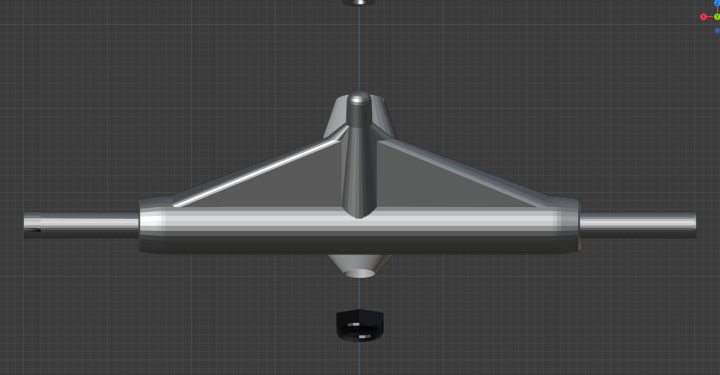
Base Plate
The baseplate is the metal plate to which the kingpin and hanger are attached. It is mounted to the deck using four bolts and serves as the structural foundation of the truck assembly.

Kingpin
The kingpin is the large bolt that connects the baseplate and hanger while allowing the truck to pivot. Some kingpins are hollow to reduce weight without compromising performance.
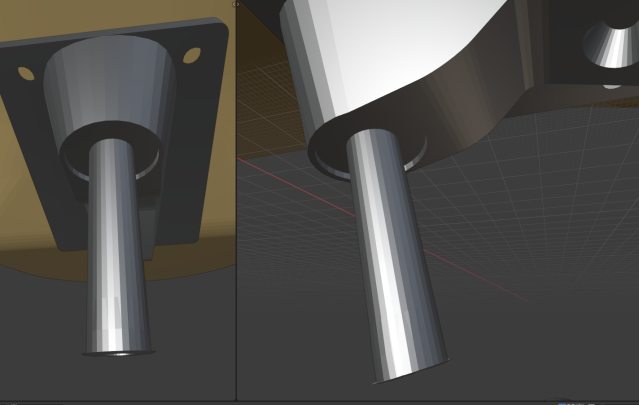
Hanger and Axle
The hanger is the metal component attached to the kingpin, housing the axle within it. In addition to holding the wheels, the hanger is the contact point for grind tricks. While steel is the standard material, some brands incorporate titanium or other alloys to enhance durability, reduce weight, and improve grind feel—though such models tend to be more costly. If the hangers are the “muscle,” the axles are the “bones,” connecting the two wheels on each truck and secured by the kingpin and axle nuts. Hollow axles are also available for reducing weight.
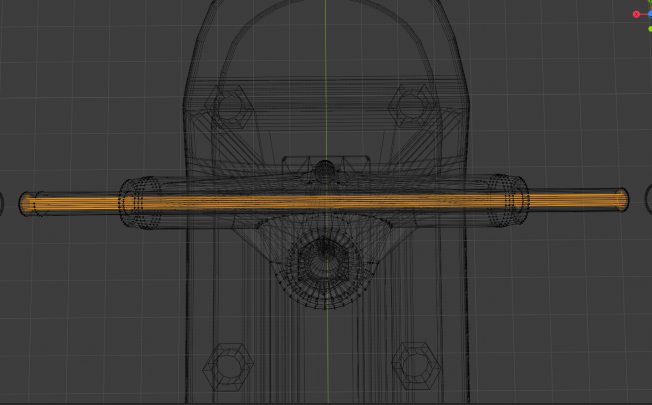
Bushings
These small urethane components are positioned between the hanger and the baseplate, allowing the truck to pivot smoothly and return to center. Each truck uses a pair of bushings. Bushings directly influence the steering response of the skateboard, and their feel can be adjusted by tightening or loosening the kingpin nut.
Bushing hardness varies according to rider preference. Street skaters often prefer firmer bushings for stability, while transition skaters may favor softer ones for easier turning. Some brands combine multiple materials within a single bushing to enhance responsiveness.
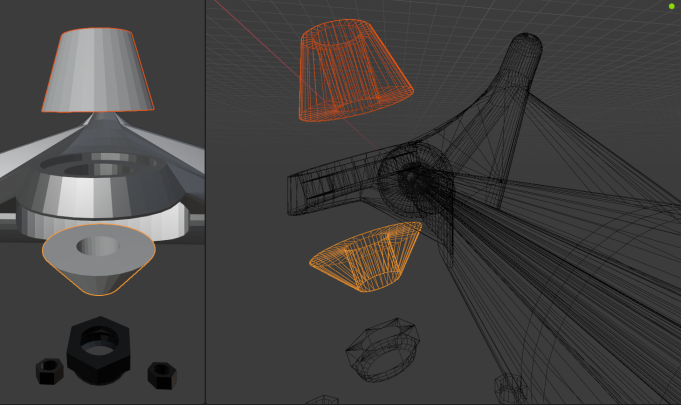
Axle Nuts
Axle nuts secure the wheels in place. Four nuts are required for a complete skateboard. They have a hexagonal shape and are typically around 5/16 inches in size.
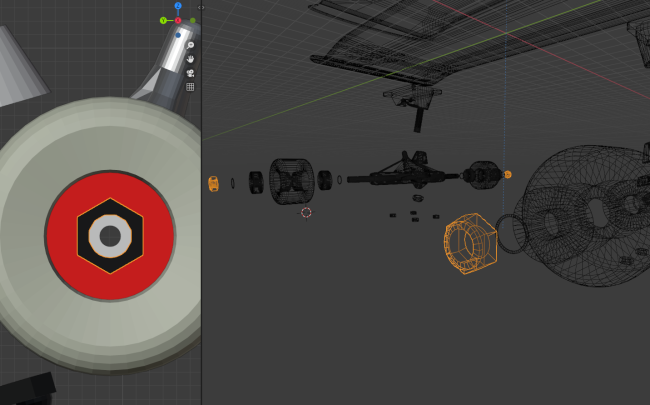
Wheels
Grip, slide and roll in one
Modern wheels are made of urethane, and four wheels are used for a complete skateboard. They vary in diameter (generally 50–70 mm) and hardness (typically 78A–100A+).
- Larger wheels allow higher speeds and absorb vibrations more effectively on rough ground, but they are more prone to wheel bite.
- Softer wheels offer excellent shock absorption but typically roll slower than harder wheels.
- Smaller wheels are lighter and preferred for flip tricks, though they roll slower and provide less cushioning.
- Harder wheels roll faster but absorb less impact and can slide unexpectedly if traction is insufficient.
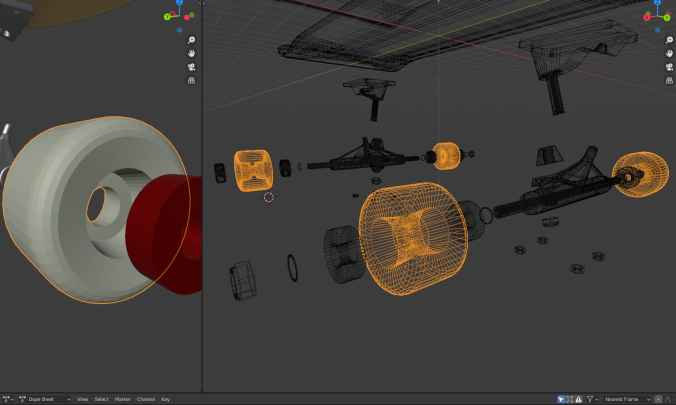
Riser pads
Increases the height of the deck
Riser pads, made of plastic or rubber, are used to increase the distance between the deck and the wheels, helping to prevent “wheel bite.” By raising the deck, the risk of the wheels contacting the deck during turns or landings is reduced. Riser pads can also soften impacts and reduce vibration for a smoother ride.
However, increasing deck height is not always advantageous: a higher deck requires more energy to pop the tail, and the raised center of gravity can make landing tricks slightly more challenging.

The Bolts and Nuts
Hold them together
Each truck is secured to the deck with four bolts, meaning a complete skateboard requires eight. Phillips-head bolts are most common, though hex bolts are sometimes used—particularly when a skater wants to distinguish the front of the deck from the rear.

Washers
Small in size, huge in role
Washers are placed between the bearings and the hanger to help the wheels spin smoothly. They play an important role in distributing pressure evenly across the bearings, which can extend their lifespan.

Bearings
The core of speed
Bearings consist of steel rings, small steel balls, and a retainer (often made of plastic or urethane) that holds the balls in place. A complete skateboard requires eight bearings—two for each wheel. Bearings reduce friction between the axle and the wheel, allowing the wheel to spin efficiently.
Ceramic bearings are also available. While more expensive, they are highly durable, resist heat, and can crush fine dust without damaging the ceramic balls or steel rings, enabling sustained high-speed performance. Bearings are often graded using ABEC (Annular Bearing Engineers’ Committee) ratings, typically ranging from 3 to 7.


 Convert your video into 3D
Convert your video into 3D Facebook
Facebook Twitter
Twitter

